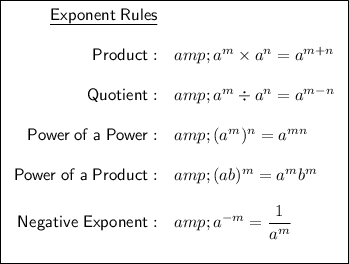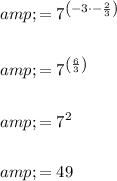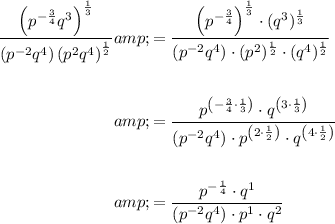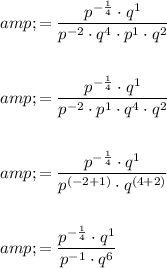Answer:





Explanation:
To simplify the given expressions, we can use exponent rules:


Question 1
To simplify the given expression, begin by expressing 27 as the product of primes.
Since 27 = 3 × 3 × 3, the prime factorization of 27 is 3³:

Now, apply the power of a power exponent rule:

Therefore:


Question 2
To simplify the given expression, begin by expressing 343 as the product of primes.
Since 343 = 7 × 7 × 7, the prime factorization of 343 is 7³:

Now, apply the negative exponent rule:

Finally, apply the power of a power exponent rule, then simplify:

Therefore:


Question 3
To simplify the given expression, apply the product exponent rule:

Therefore:


Question 4
To simplify the given expression, begin by dividing the numbers 32 and 4:

Now, apply the quotient rule:

Therefore:


Question 5
Given expression:

Before evaluating the expression when p = 16 and q = 2, we will simplify the expression.
Begin by applying the power of a power exponent rule:

Now, apply the product exponent rule to the denominator:

Next, apply the quotient exponent rule:

Finally, apply the negative exponent rule:

Now we have simplified the given expression, we can substitute p = 16 and q = 2:

Rewrite 16 as the product of primes: 16 = 2⁴

Apply the power of a power exponent rule:

Apply the quotient power rule:

Finally, apply the negative exponent rule:

Therefore, the value of the expression when p = 16 and q = 2 is:
